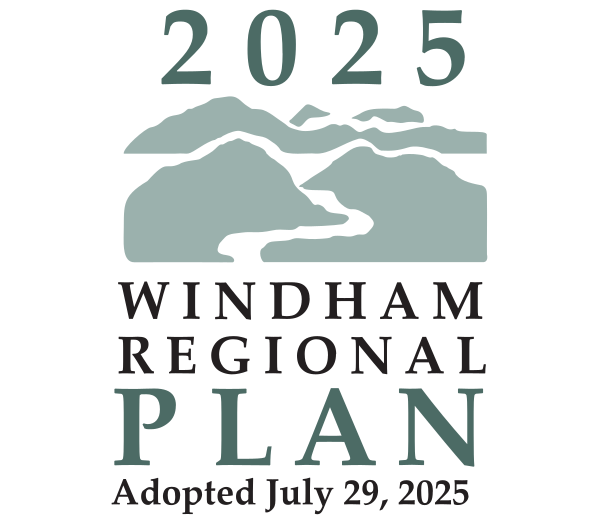Housing Policies
-
Promote and support an increase in the number of homes available and the diversity of housing stock (types of units, and rental and home ownership opportunities) within the region. This includes offering safe, adequate, accessible (universal design) and affordable housing to meet the needs of all residents across the entire income spectrum. This is policy is urgent and of high regional priority.
-
New housing should be developed in a manner that maintains the historic settlement pattern of compact village and urban centers separated by rural countryside. Support growth in and around existing centers to promote walkability and social connectivity. All new development should strive to have minimal impact on natural resources, open space, floodplains, fluvial erosion hazard zones, and important agricultural and forest lands.
-
New housing and infill housing should be encouraged throughout the region and especially where public wastewater and water infrastructure are in place and can support the density needed to promote more affordable development, including multi-family housing designed to meet the needs of the region’s changing population (smaller households). Alternative housing opportunities such as condominiums, homesharing, co-housing, housing cooperatives and Accessory Dwelling Units (ADUs) should also be encouraged.
-
Promote the implementation of innovative planning, design, and construction techniques that minimize the long term cost and energy consumption of housing, including locating housing convenient to community centers, in proximity to public transit routes, in a compact development arrangement, and employing energy efficient construction techniques. Encourage reuse of vacant or underutilized properties, including strip commercial development, for residential use.
-
Support the work of communities addressing infrastructure needs and regulatory reform that is needed to make it easier to build new and denser housing where it works best in compact centers. Provide assistance, as needed and when funding is available, to update bylaws and plan for community water and wastewater projects.
-
Provide financial support to assess and clean up brownfield sites that will be redeveloped for new housing. This should be a top priority for the Windham Region Brownfields Reuse Initiative.
-
Support the work of public and nonprofit agencies, including housing trusts, who plan for and finance affordable housing.
-
Promote the rehabilitation and maintenance of the existing housing stock and multifamily properties, as well as expanding the number of units where appropriate.
-
Support affordable housing projects and encourage waiving of fees, use of tax credits and property tax abatement and assistance with public grants and other sources of funding.
-
Support the development of a variety of housing types to meet the needs of the Region’s aging population, including independent living, assisted living, nursing homes, retirement communities, and active adult communities.
-
Support the development of housing that meets the needs of households in the Region with school-aged children.
-
Support the development of temporary workforce housing to meet the employment needs of businesses. Ensure that adequate transportation services for employees are provided for between the place of employment and temporary housing.
-
Support organizations that provide shelter and support for all residents, including those experiencing homelessness.
-
Support efforts by towns to manage Short Term Rentals.
-
Facilitate opportunities for housing that is affordable to the region’s workforce. When appropriate, Act 250 applications for development that will create twenty-five new full-time equivalent positions shall provide evidence that there is existing available and affordable housing stock for the new employees. If housing that meets this requirement is not available, the development shall include affordable housing within the project or a mitigation payment to be used for affordable housing in the Windham Region.
-
When reviewing the housing element in town plans, WRC will look for consideration of (not in ranked order)
-
Consistency with future land use goals
-
Aging in place
-
Accessible, safe housing
-
Low-income housing for all communities
-
Workforce housing
-
Fair housing that advances diversity, equity and inclusion
-
Energy efficiency
-
Connection to public transit routes or safe bicycling or walking connections to services
-
Planning for wastewater and water infrastructure to support compact settlement, housing development, and community vitality.
